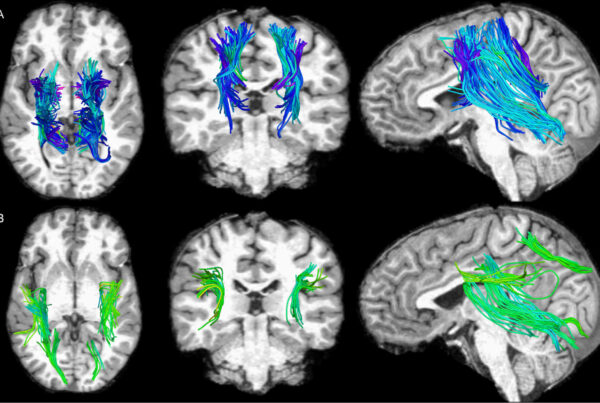 Imagine: a pharmaceutical prevention, treatment or even cure for Alzheimer’s.
Imagine: a pharmaceutical prevention, treatment or even cure for Alzheimer’s.
It is almost impossible to overstate how monumental a development that would be, and how it would answer the prayers of millions.
Although science isn’t there—yet—a new study published in The Journal of Neuroscience spearheaded by USC Leonard Davis School of Gerontology researchers offers a tantalizing glimpse of potential solutions.
“Our data suggests the possibility of drugs that can prevent and treat Alzheimer’s,” said lead author, professor and lab principal Christian Pike of the USC Leonard Davis School. “It’s just mouse data, but extremely encouraging mouse data.”
The team studied the effects of a class of drugs called TSPO ligands on male mice that were genetically engineered to develop Alzheimer’s disease, known as 3xTg-AD mice. Because a key mechanism of TSPO ligands is to increase production of steroid hormones, it was important to ensure that the mice had low levels of testosterone and related hormones before treatment. Younger mice were castrated while, in older mice, the decrease occurred as a normal consequence of aging.
“We looked at the effects of TSPO ligand in young adult mice when pathology was at an early stage, and in aged mice when pathology was quite severe,” Pike said. “TSPO ligand reduced measures of pathology and improved behavior at both ages.”
The most surprising finding for Pike and his team was the effect of TSPO ligand in the aged mice. Four treatments—once per week over four weeks—in aged 3xTg-AD mice resulted in significant lowering of Alzheimer’s-related pathology and improvements in memory behavior. This finding suggested the possibility that TSPO ligands can reverse components of Alzheimer’s disease, and thus have the potential to be useful in treatment.
For humans, these findings may indeed be quite significant.
“TSPO ligands are currently used in humans in certain types of neuroimaging. Newer TSPO ligands are at the clinical trials stage of development for treatment of anxiety and other conditions,” Pike said. “There is a strong possibility that TSPO ligands similar to the ones used in our study could be evaluated for therapeutic efficacy in Alzheimer’s patients within the next few years.”
In light of their findings, the team will next focus on understanding how TSPO ligands reduce Alzheimer’s disease pathology. Building on the established knowledge that TSPO ligands can act protective by reducing inflammation, shielding nerve cells from injury and increasing the production of neuroactive hormones in the brain, the team will study which of these actions is the most significant in fighting Alzheimer’s disease so they can develop newer TSPO ligands accordingly.
While Pike and his team acknowledge that their findings represent a very exciting possibility, they also stress that it is by no means a given.
“From the optimistic perspective, our data provide very promising findings with tangible potential benefits for both the prevention and treatment of Alzheimer’s,” Pike said. “On the pessimistic side, research scientists have developed many interventions that cured Alzheimer’s in mice but have failed to show significant benefits in humans. A critical direction we are currently pursuing is successfully translating these findings into humans.”
Co-authors of the study were Anna M. Barron (USC Leonard Davis School and Molecular Imaging Center, National Institute of Radiological Sciences, Japan); Luis M. Garcia-Segura (Instituto Cajal, Spain); Donatella Caruso and Roberto C. Melcangi (Department of Pharmacological and Biomolecular Sciences, Center of Excellence on Neurodegenerative Diseases, University of Milan); and Anusha Jayaraman and Joo-Won Lee (USC Leonard Davis).
The research was funded by the National Institutes of Health in support of the USC Alzheimer’s Disease Research Center, directed by Helena Chui.




